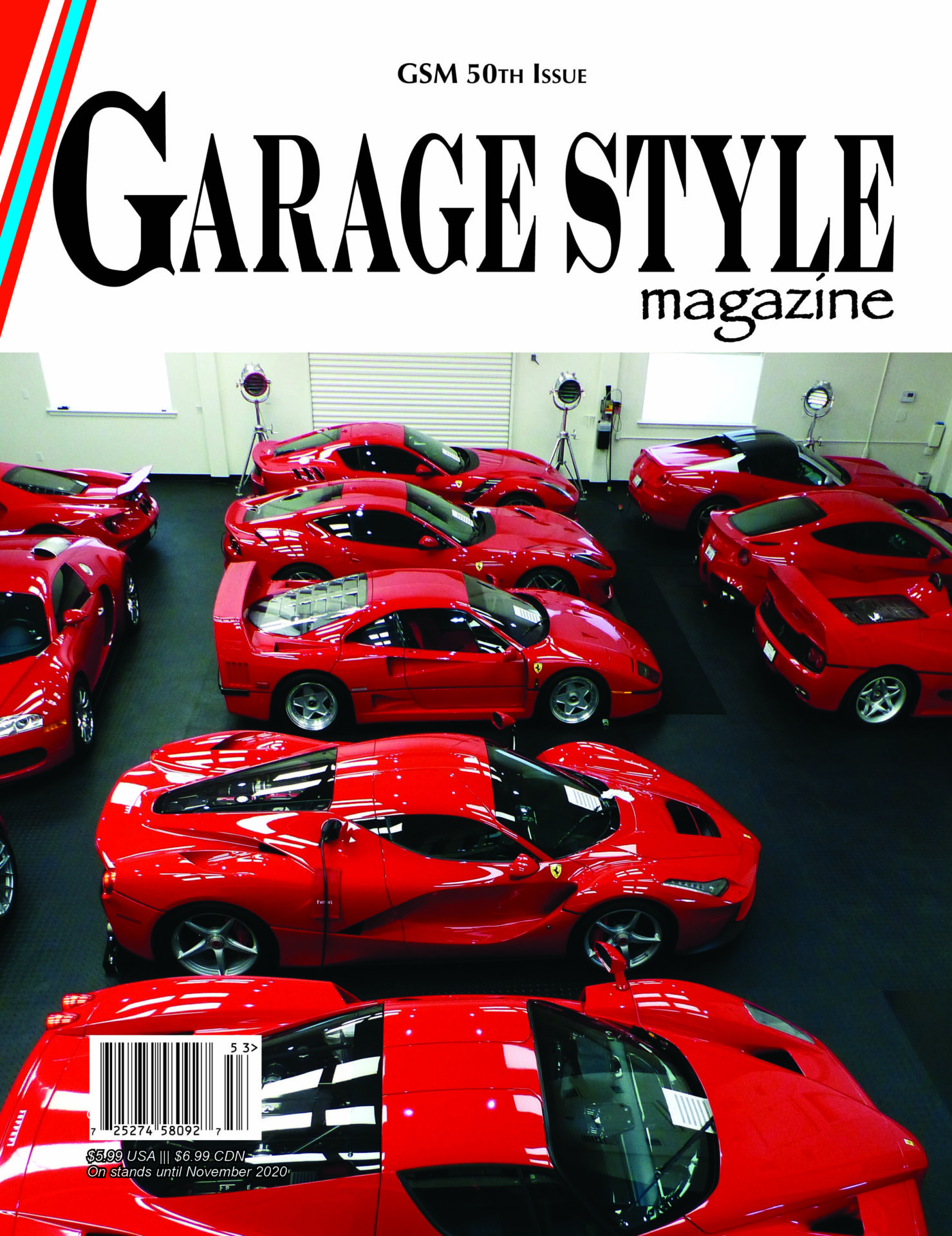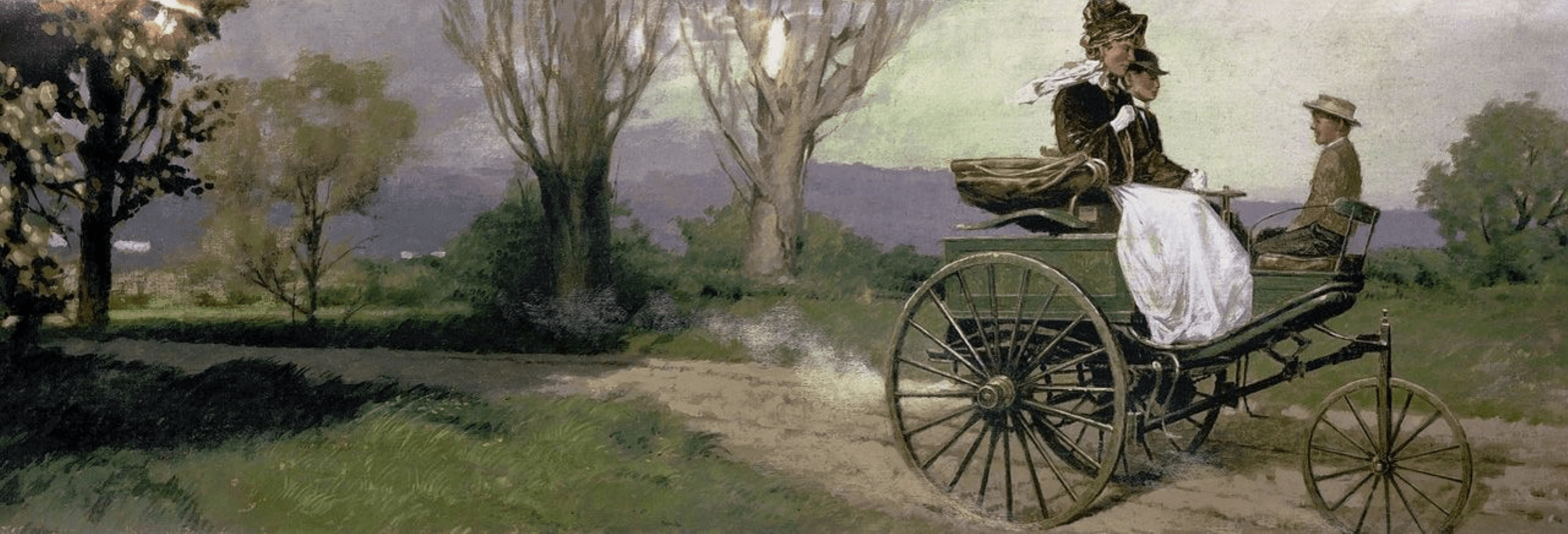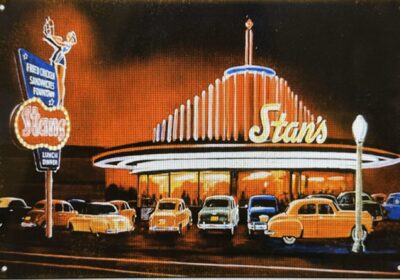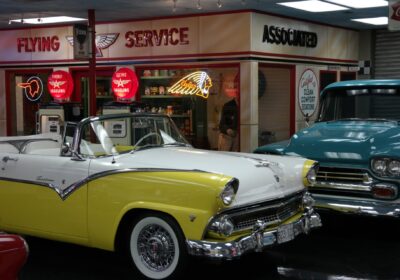CarArtInc.us – CAR ART, Inc. :: World’s Finest Automotive Art
The first in a series of articles about the origins and development of automotive art Cars in art may not come to mind for some, but as author Lisa Crawford Watson observed: “Those who appreciate the composition and line, shape and form, color and texture of automotive splendor, also tend to appreciate those who can express it on canvas, in bronze or through a lens.”
GSM concluded, “No garage is complete without art.”
The most stylish garages in every issue display framed prints, posters, and perhaps even original works of art. There are many thousands from which to choose. But my research points to the painting above from the Mercedes-Benz Archives in Stuttgart as the genesis of automotive fine art.
The automobile was born in Mannheim, Germany on January 29th 1886. Karl and Bertha Benz were the parents and Patent No. 37435 the birth certificate. Their three-wheeler brainchild’s first outing was a short spin past baffled pedestrians on July 3rd.
On August 5th 1888, Bertha made a groundbreaking trip accompanied by her teenage sons Eugen and Richard, in a larger Model III Patent-Motorwagen. She negotiated 65 miles of unpaved roads from Mannheim to her mother’s home in Pforzheim. Few witnessed or realized the significance of her 12-hour journey, in which she rigorously tested the vehicle, ‘birthed’ the world’s first ‘gas station’, diagnosed and ingeniously solved mechanical problems encountered en route and – necessity being the mother of invention – created brake pads! Bertha improved the automobile and gained publicity, which persuaded people who were hesitant to buy this new contraption: “If she can do it….”
I believe that seminal event was the catalyst for automotive fine art, when it produced this “contemporary portrayal, 1888.”
It seems likely that Karl commissioned the charming painting of his wife and sons using his remarkable invention. The unknown artist, presumably German, achieved numerous firsts on a single canvas: the first automobile, first female driver, first mechanic, first passengers, first rear-facing passenger, and first car shown in motion, on the first-ever long distance drive!
Next year, the 1889 World’s Fair with its Eiffel Tower in Paris provided a spectacular setting for 32 million visitors to see motorcars in person for the first time in their lives. For six months, Benz, Daimler, Peugeot and Panhard revealed the future of personal transportation inside the enormous Palais des Machines. A gentleman from England purchased the 1888 Benz Model III displayed, the first-ever automobile sold, and on display since 1913 in London’s Science Museum as the oldest original car in existence.
These newfangled horseless carriages soon began mingling with horse-drawn carriages in the trendy Bois de Boulogne as modern symbols of freedom, independence and individualism. Fine artists took note, including famed Henri de ToulouseLautrec who sketched his cousin driving one. Paris: the breeding ground for car makers, car artists, and soon, car racing!
Naturally, the style of an automobile determined its likelihood of appearing in an artwork that would appeal to a buyer. Passenger cars in the Antique (1886-1914) and Vintage (1915-24) eras became visually more interesting with more enclosed bodywork, which transformed in the Classic era (1925-44) with Harley Earl’s stylish 1920s designs in Hollywood and Detroit, 1930s French art deco, 1940s British sports cars, and peaked in the Milestone era (1945- 74) with 1950s American fins and 1960s Italian exotics.
The recognition and appreciation of automotive fine art became truly established when like-minded artists realized the need to collectively promote and celebrate this genre. In 1983, the Automotive Fine Arts Society formed in the United States. In 1986 the Guild of Motoring Artists followed suit in the United Kingdom.
AFAS exhibitions of original paintings and sculptures by their international members became a draw at the world-renowned coastal Concours d’Elegance at Pebble Beach in California and Amelia Island in Florida, with prestigious awards for outstanding work. Ken Eberts, a former car designer with Ford, is their founder and president. His art communicates the history, excitement, and aesthetics of automobiles in a way that can be understood and appreciated by car and art enthusiasts alike. “The automobile is a passionate subject that resonates with all of us,” said Eberts.
Bertha Benz was inducted into the Automotive Hall of Fame in 2016 – only the fourth woman among hundreds of men.





